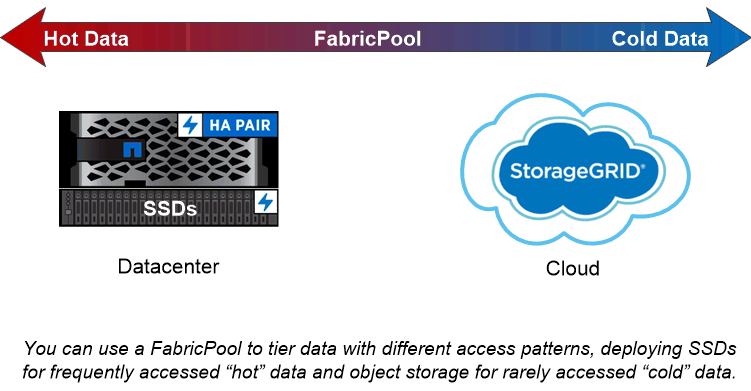Disks and ONTAP local tiers
 Suggest changes
Suggest changes


Local tiers, also called aggregates, are logical containers for the disks managed by a node. You can use local tiers to isolate workloads with different performance demands, to tier data with different access patterns, or to segregate data for regulatory purposes.

|
Prior to ONTAP 9.7, System Manager uses the term aggregate to describe a local tier. Regardless of your ONTAP version, the ONTAP CLI uses the term aggregate. |
-
For business-critical applications that need the lowest possible latency and the highest possible performance, you might create a local tier consisting entirely of SSDs.
-
To tier data with different access patterns, you can create a hybrid local tier, deploying flash as high-performance cache for a working data set, while using lower-cost HDDs or object storage for less frequently accessed data.
-
A Flash Pool consists of both SSDs and HDDs.
-
A FabricPool consists of an all-SSD local tier with an attached object store.
-
-
If you need to segregate archived data from active data for regulatory purposes, you can use a local tier consisting of capacity HDDs, or a combination of performance and capacity HDDs.

Working with local tiers in a MetroCluster configuration
If you have a MetroCluster configuration, you should following the procedures in the MetroCluster documentation for initial configuration and guidelines for local tiers and disk management.


